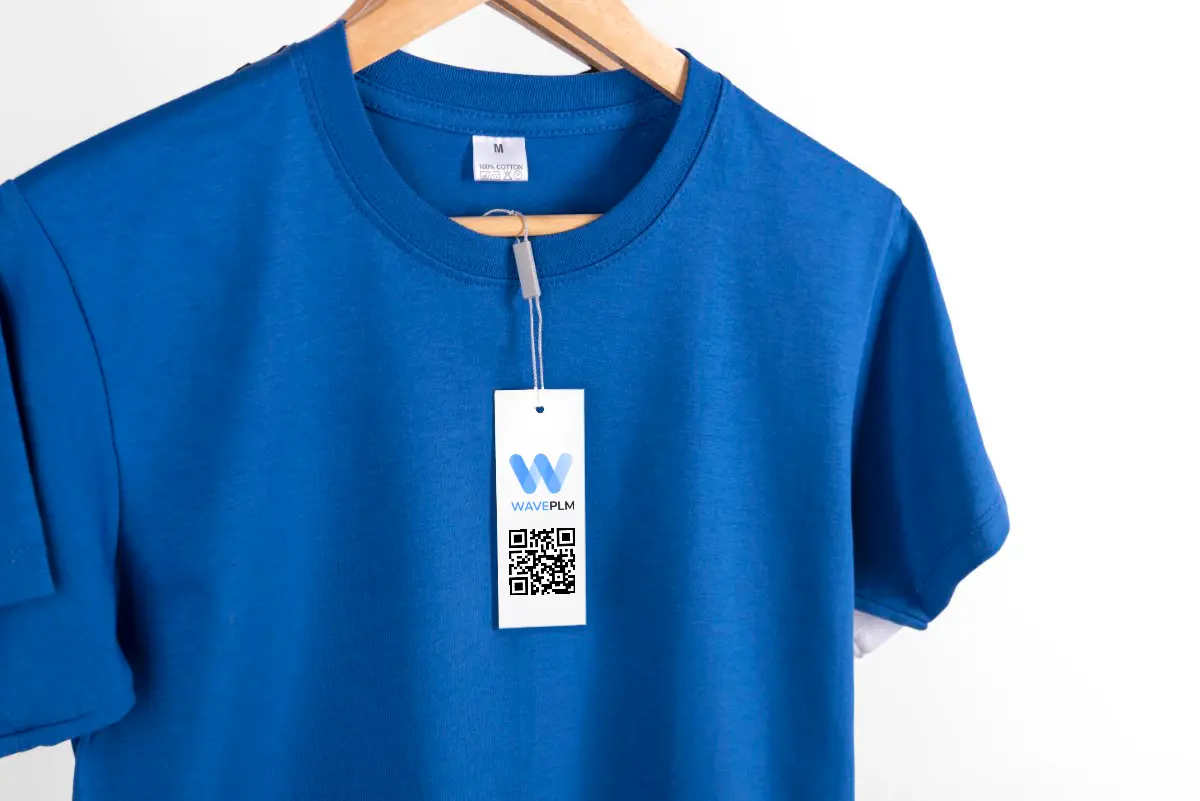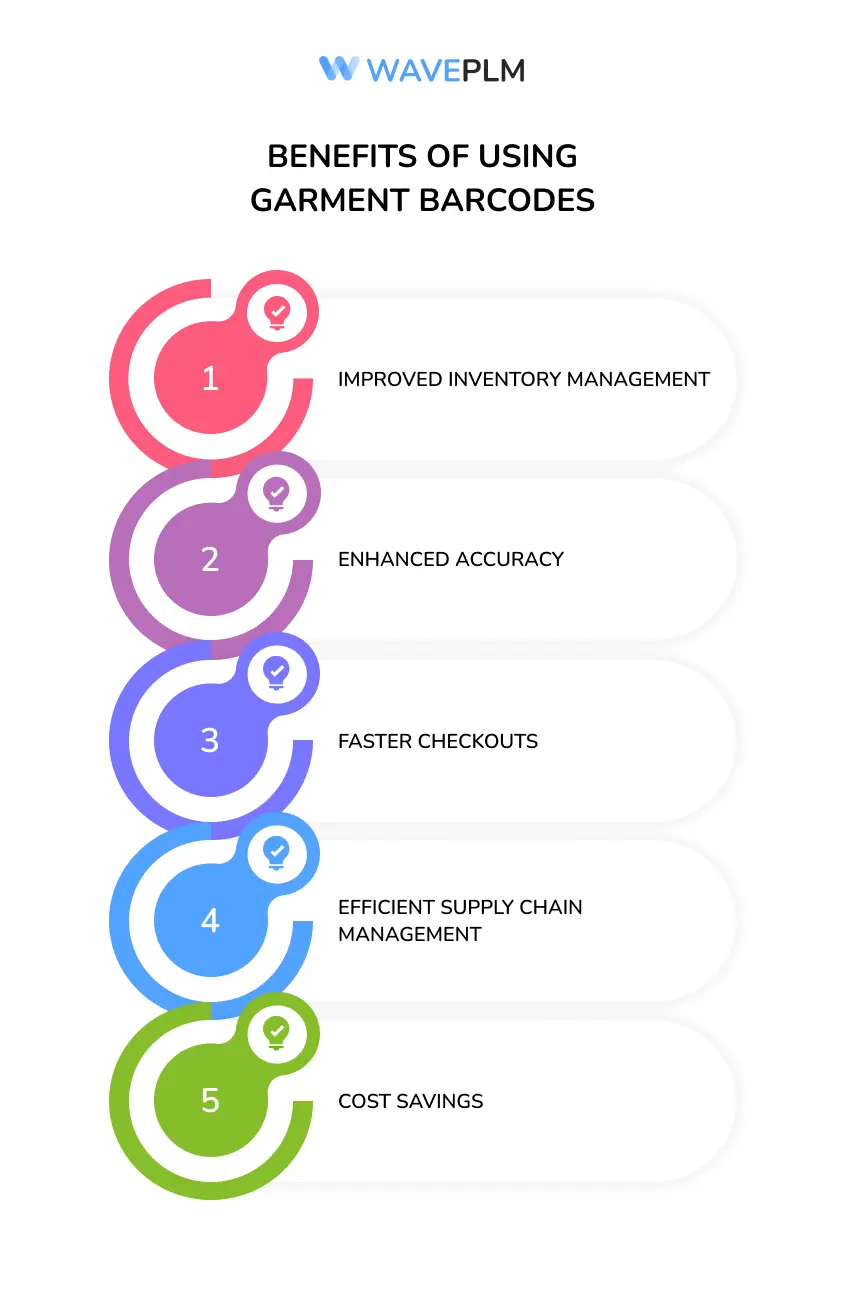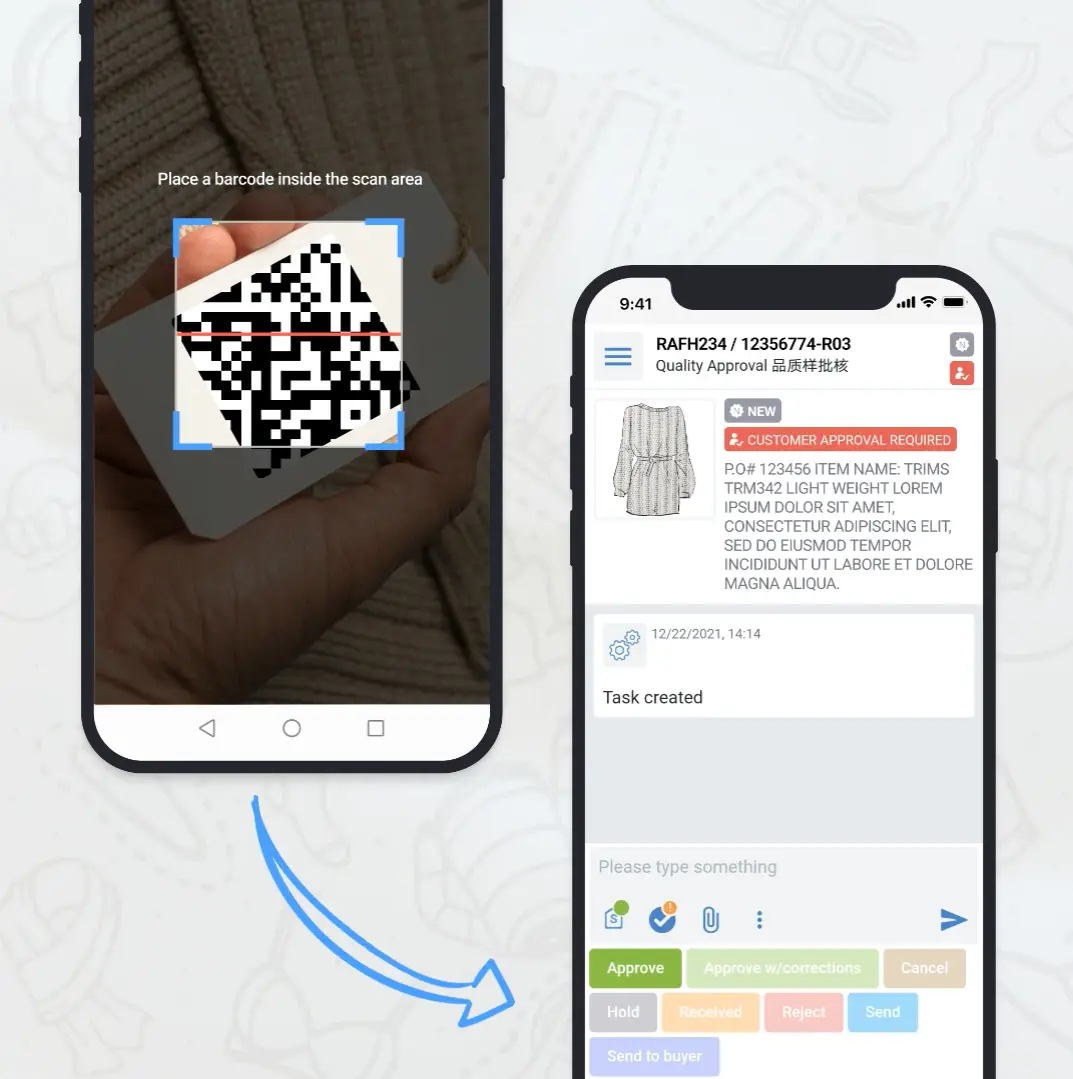
In today’s fast-paced fashion industry, efficiency, accuracy, and streamlined processes are essential for staying competitive. One technological advancement that has significantly contributed to these objectives is the use of garment barcodes.
This simple yet powerful tool has revolutionized the way the fashion industry operates, from manufacturing to retail. In this article, we will explore what garment barcodes are, their benefits, and how Product Lifecycle Management (PLM) systems can further enhance efficiency in the fashion industry.
What Are Garment Barcodes?
Barcodes for clothing are unique identifiers attached to clothing items that store vital information about the product. These barcodes can be scanned using barcode readers, enabling quick access to data such as size, color, style, price, and more. There are several types of barcodes used in the fashion industry, including:
- UPC (Universal Product Code): Commonly used in retail, these barcodes contain a 12-digit number that uniquely identifies the item.
- EAN (European Article Number): Similar to UPC, EAN barcodes are widely used in Europe and contain either 8 or 13 digits.
- QR Codes: These are two-dimensional barcodes that can store more information and can be scanned using smartphones.
- RFID Tags (Radio-Frequency Identification): While not traditional barcodes, RFID tags store data electronically and can be read remotely.

Benefits of Using Garment Barcodes
1. Improved Inventory Management
Garment barcode labels streamline the inventory management process. Retailers and manufacturers can track stock levels in real-time, reducing the risk of overstocking or understocking. This leads to better inventory turnover and optimized storage space.
2. Enhanced Accuracy
Manual data entry is prone to errors. Barcode clothing labels eliminate this risk by automating data capture, ensuring accurate product information. This accuracy is crucial for maintaining correct inventory records and pricing.
3. Faster Checkouts
In retail, barcodes significantly speed up the checkout process. Scanning a barcode is much quicker than manually entering product details at the point of sales, reducing wait times for customers and improving the overall shopping experience.
4. Efficient Supply Chain Management
Barcode labels for clothing facilitate seamless communication between different stages of the supply chain. From manufacturers to distributors to retailers, everyone can access up-to-date information, leading to improved coordination and faster delivery times.
5. Cost Savings
By reducing manual labor, minimizing errors, and optimizing inventory management, barcodes help fashion businesses save on operational costs. These savings can be reinvested into other areas of the business, such as marketing or product development.

How PLM Systems Enhance the Fashion Industry
While garment barcodes provide a solid foundation for efficiency, integrating that together with Product Lifecycle Management (PLM) systems can take these benefits to the next level. PLM systems manage the entire lifecycle of a product, from initial design to final sale. Here’s how PLM systems can help in the fashion industry:
Streamlined Processes with Wave PLM App
Wave PLM Apparel Connect App is a game-changer for fashion business owners. It not only allows you to be constantly aware of any changes to your processes but also give users an opportunity to use their phone camera to scan barcodes and quickly see style details and other information. This feature effectively transforms mobile phones into portable order-taking machines, greatly enhancing efficiency.

Eliminating Errors in the Fashion Supply Chain
Human errors, such as miscounting stock or inputting incorrect product information, can have costly repercussions in the fashion industry. These mistakes often result in incorrect orders, returns, and dissatisfied customers, all of which can negatively impact a brand’s reputation and bottom line.
QR code supply chain management offers a robust solution to minimize these errors, ensuring accurate order processing and enhancing customer satisfaction.
For example, in Wave PLM QR code is used for automatic sample tracking, including automatic task creation and update.
Choosing the Right Barcode and QR Code System for Fashion Brands
As the fashion industry evolves, the need for advanced tracking systems becomes increasingly crucial. Implementing an effective barcode or QR code system can significantly enhance inventory management and operational efficiency. When selecting the right system, fashion brands should consider several key factors:
1. Type of Barcode
2. Scanner Type
The choice of scanner depends on the store’s size and transaction volume:
- Handheld Scanners: These are versatile and easy to use, making them suitable for small to medium-sized stores.
- Fixed Scanners: Ideal for high-volume environments, such as large retail outlets or warehouses, where products are scanned frequently.
3. Connectivity Options
Consider the connectivity options that best suit your operational needs:
- Wired Scanners: These are reliable and typically less expensive but limit mobility.
- Wireless Scanners: Offering greater flexibility, these scanners are ideal for large stores or warehouses where mobility is essential.
4. Durability
In fast-paced environments, the durability of scanners is critical:
- Rugged Scanners: Designed to withstand drops, dust, and other harsh conditions, these scanners are perfect for warehouses and busy retail settings.
- Standard Scanners: Suitable for environments with less physical stress, such as boutiques or office settings.
5. Software Compatibility
Ensuring that the barcode or QR code system integrates seamlessly with existing software is vital:
- ERP Integration: The system should work well with Enterprise Resource Planning (ERP) software to streamline inventory management and reporting.
- POS Compatibility: For retail environments, compatibility with Point of Sale (POS) systems is crucial for efficient transaction processing.
- PLM Systems: Integration with Product Lifecycle Management (PLM) systems can enhance product tracking from design to sale.

Conclusion
Garment barcodes have undeniably transformed the fashion industry by improving accuracy, efficiency, and cost-effectiveness. When combined with PLM systems, the benefits are amplified, providing a comprehensive solution for managing the entire lifecycle of fashion products. As the industry continues to evolve, adopting these technologies will be crucial for businesses looking to stay competitive and meet the demands of modern consumers.
Fashion companies can improve operations, product quality, and customer value by using garment barcodes and PLM systems. This helps them succeed in a competitive market.





Leave a Reply